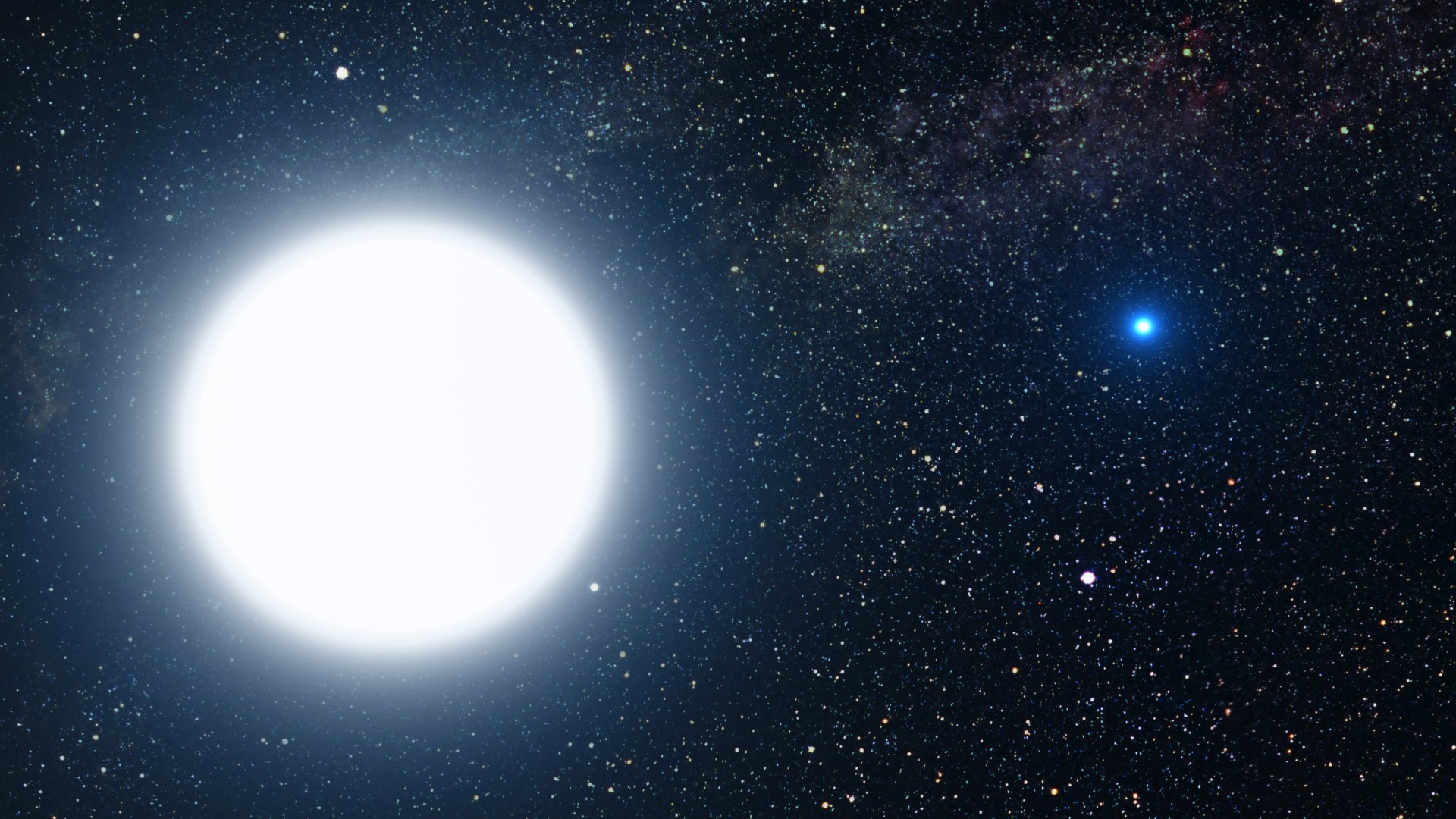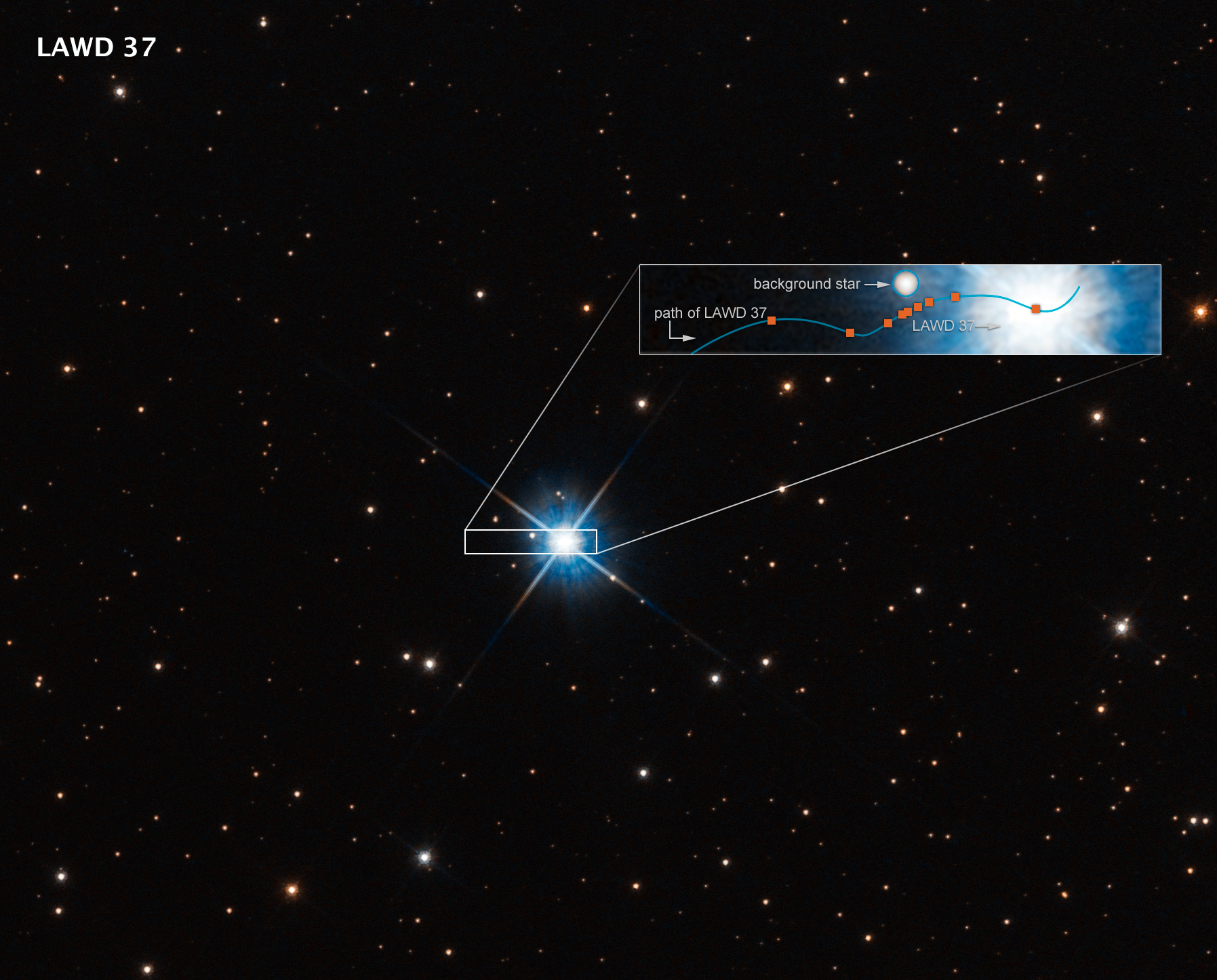NASA scientists 'weigh' a white dwarf for the first time using a space-time trick predicted by Einstein
NASA astronomers used the Hubble Space Telescope to measure the mass of a white dwarf, an important step for understanding how stars die.

Astronomers have finally weighed an isolated white dwarf, or the shriveled husk of a dead star, using a strange phenomenon predicted by Einstein's theory of relativity decades ago.
The findings confirm astronomers' predictions about how massive white dwarfs can be, and may help explain the strange, ultra-dense matter that makes up these stellar leftovers.
In the new study, astronomers used the legendary Hubble Space Telescope to measure the mass of a standalone white dwarf called LAWD 37, according to a study published in the March issue of the journal Monthly Notices of the Royal Astronomical Society. Although astronomers have weighed white dwarfs in binary star systems — systems where two stars orbit a common center of mass — LAWD 37 is the first white dwarf to be measured in isolation.
The research team, led by University of California Santa Cruz astronomer Peter McGill, used a quirky property of the universe to make this pioneering measurement: the fact that gravity warps space-time. As LAWD 37 passed in front of a distant bright star, the light from the background star bent around the nearby white dwarf in a process known as gravitational microlensing, originally predicted by Albert Einstein. When LAWD 37 warped the star’s light, the star appeared to shift ever so slightly in the sky — an effect Hubble can detect with incredible precision.
"These events are rare, and the effects are tiny," said McGill in a NASA statement. "For instance, the size of our measured offset is like measuring the length of a car on the Moon as seen from Earth." This extremely precise measurement took years of observations with Hubble to acquire.
Ghostly white dwarfs
Many stars, like our sun, don’t end with a bang. Instead, they slowly expand and fade out, losing their outer layers and leaving behind their dead cores. These remnants, known as white dwarfs, are made of degenerate matter, a strange type of ultra-compressed gas scientists are still working to understand.
Located only 15 light-years from Earth, LAWD 37 has been a popular subject of study for many years. In their new research, the study authors used positioning data from the European Space Agency’s Gaia mission to predict precisely when LAWD 37 would pass in front of the distant star, allowing the team to prepare for the gravitational lensing event accordingly. Based on the distant star’s slight movement in the sky, the team calculated that the white dwarf is approximately 56% as massive as the sun, which agrees with existing models and predictions for what’s going on inside these strange stellar remnants.
Get the world’s most fascinating discoveries delivered straight to your inbox.
This mass measurement is one of hopefully many more to come — including measurements based on new data from the James Webb Space Telescope. The team is already observing another white dwarf, LAWD 66, and will continue to watch it until they have enough information to measure its mass in 2024, uncovering yet another piece of the puzzle.

Briley Lewis (she/her) is a freelance science writer and Ph.D. Candidate/NSF Fellow at the University of California, Los Angeles studying Astronomy & Astrophysics. Follow her on Twitter @briles_34 or visit her website www.briley-lewis.com.



